*NURSING > QUESTIONS & ANSWERS > Halter: Varcarolis’ Foundations of Psychiatric Mental Health Nursing: A Clinical Approach, 8th Edi (All)
Halter: Varcarolis’ Foundations of Psychiatric Mental Health Nursing: A Clinical Approach, 8th Edition. Chapter 11: Childhood and Neurodevelopmental Disorders. Questions and Answers. A+
Document Content and Description Below
MULTIPLE CHOICE 1. Which nursing diagnosis is universally applicable for children diagnosed with autism spectrum disorders? a. Impaired social interaction related to difficulty maintaining relatio... nships b. Chronic low self-esteem related to excessive negative feedback c. Deficient fluid volume related to abnormal eating habits d. Anxiety related to nightmares and repetitive activities ANS: A Children diagnosed with autism spectrum disorders display profoundly disturbed social relatedness. They seem aloof and indifferent to others, often preferring inanimate objects to human interaction. Language is often delayed and deviant, further complicating relationship issues. The other nursing diagnoses might not be appropriate in all cases. PTS: 1 DIF: Cognitive Level: Apply (Application) REF: Pages 11-29, 30, 54 (Table 11-1) TOP: Nursing Process: Analysis/Diagnosis MSC: Client Needs: Psychosocial Integrity 2. Which behavior indicates that the treatment plan for a child diagnosed with an autism spectrum disorder was effective? The child a. plays with one toy for 30 minutes. b. repeats words spoken by a parent. c. holds the parent’s hand while walking. d. spins around and claps hands while walking. ANS: C Holding the hand of another person suggests relatedness. Usually, a child diagnosed with an autism spectrum disorder would resist holding someone’s hand and stand or walk alone, perhaps flapping arms or moving in a stereotyped pattern. The incorrect options reflect behaviors that are consistent with autism spectrum disorders. PTS: 1 DIF: Cognitive Level: Apply (Application) REF: Pages 11-33 to 35 TOP: Nursing Process: Evaluation MSC: Client Needs: Psychosocial Integrity 3. A kindergartener is disruptive in class. This child is unable to sit for expected lengths of time, inattentive to the teacher, screams while the teacher is talking, and is aggressive toward other children. The nurse plans interventions designed to a. promote integration of self-concept. b. provide inpatient treatment for the child. c. reduce loneliness and increase self-esteem. d. improve language and communication skills. ANS: C Because of their disruptive behaviors, children diagnosed with attention deficit hyperactivity disorder (ADHD) often receive negative feedback from parents, teachers, and peers, leading to self-esteem disturbance. These behaviors also cause peers to avoid the child with ADHD, leaving the child with ADHD vulnerable to loneliness. The child does not need inpatient treatment at this time. The incorrect options might or might not be relevant. PTS: 1 DIF: Cognitive Level: Analyze (Analysis) REF: Pages 11-36, 40 TOP: Nursing Process: Planning MSC: Client Needs: Psychosocial Integrity 4. A nurse will prepare teaching materials for the parents of a child newly diagnosed with ADHD. Information will focus on which medication likely to be prescribed? a. Paroxetine b. Imipramine c. Methylphenidate d. Carbamazepine ANS: C Central nervous system (CNS) stimulants are the drugs of choice for treating children diagnosed with ADHD. Methylphenidate and mixed amphetamine salts are most commonly used. None of the other drugs are psychostimulants used to treat ADHD. PTS: 1 DIF: Cognitive Level: Understand (Comprehension) REF: Pages 11-41, 56 (Table 11-2) TOP: Nursing Process: Planning MSC: Client Needs: Physiological Integrity 5. What is the nurse’s priority focused assessment for side effects in a child taking methylphenidate for ADHD? a. Dystonia, akinesia, and extrapyramidal symptoms b. Bradycardia and hypotensive episodes c. Sleep disturbances and weight loss d. Neuroleptic malignant syndrome ANS: C The most common side effects are gastrointestinal disturbances, reduced appetite, weight loss, urinary retention, dizziness, fatigue, and insomnia. Weight loss has the potential to interfere with the child’s growth and development. The distracters relate to side effects of conventional antipsychotic medications. PTS: 1 DIF: Cognitive Level: Apply (Application) REF: Pages 11-41 to 43, 56 (Table 11-2) TOP: Nursing Process: Assessment MSC: Client Needs: Physiological Integrity [Show More]
Last updated: 1 year ago
Preview 1 out of 11 pages
Instant download

Buy this document to get the full access instantly
Instant Download Access after purchase
Add to cartInstant download
Reviews( 0 )
Document information
Connected school, study & course
About the document
Uploaded On
Apr 22, 2021
Number of pages
11
Written in
Additional information
This document has been written for:
Uploaded
Apr 22, 2021
Downloads
0
Views
46


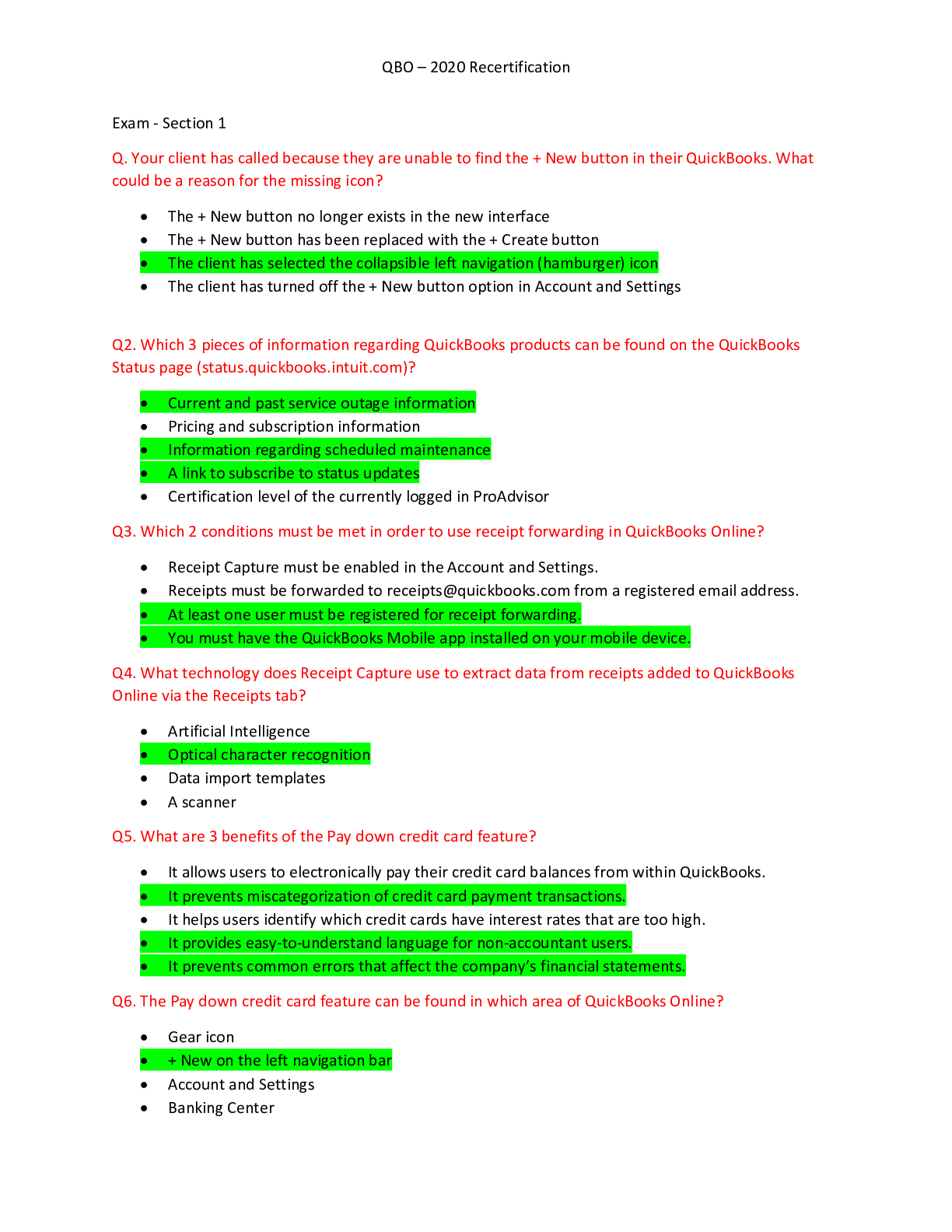
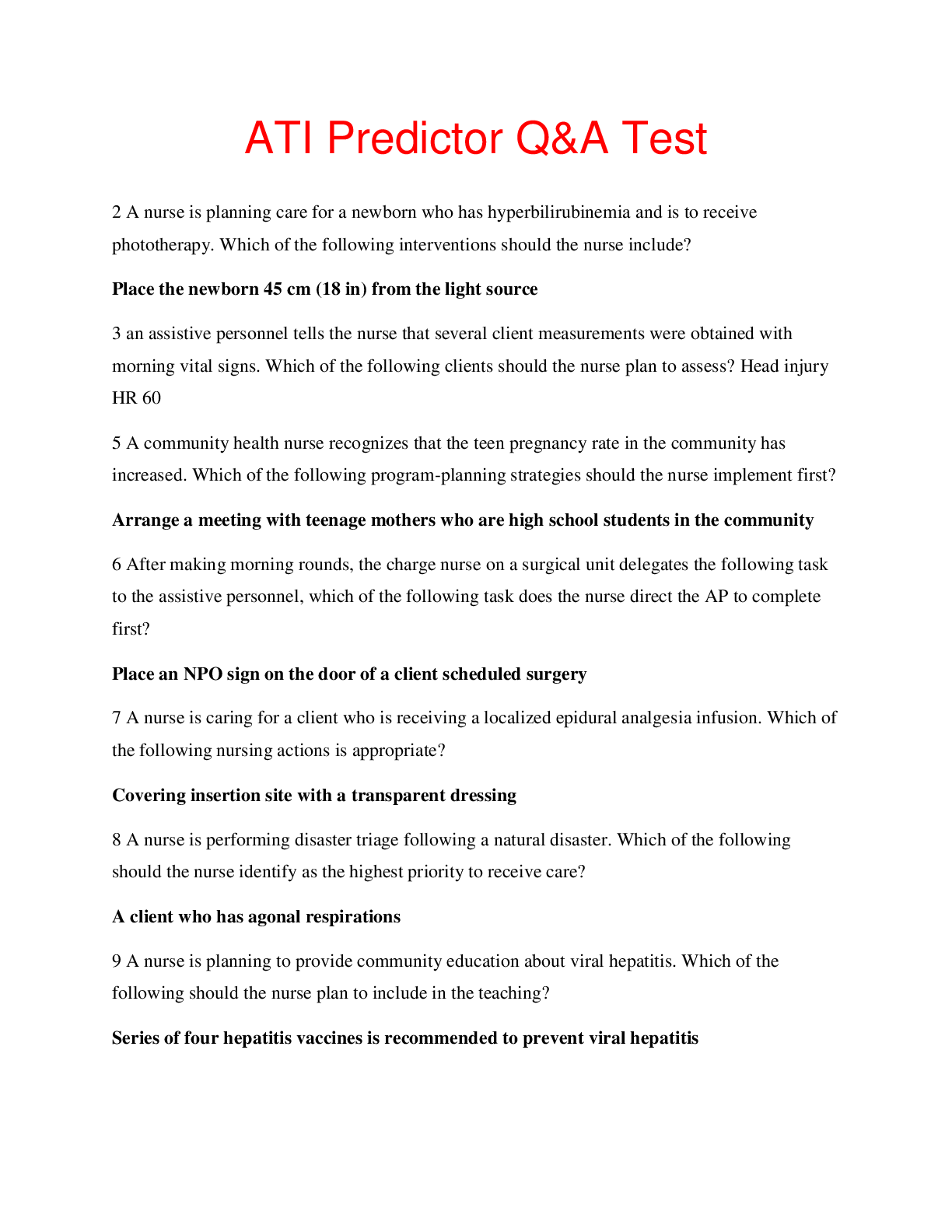



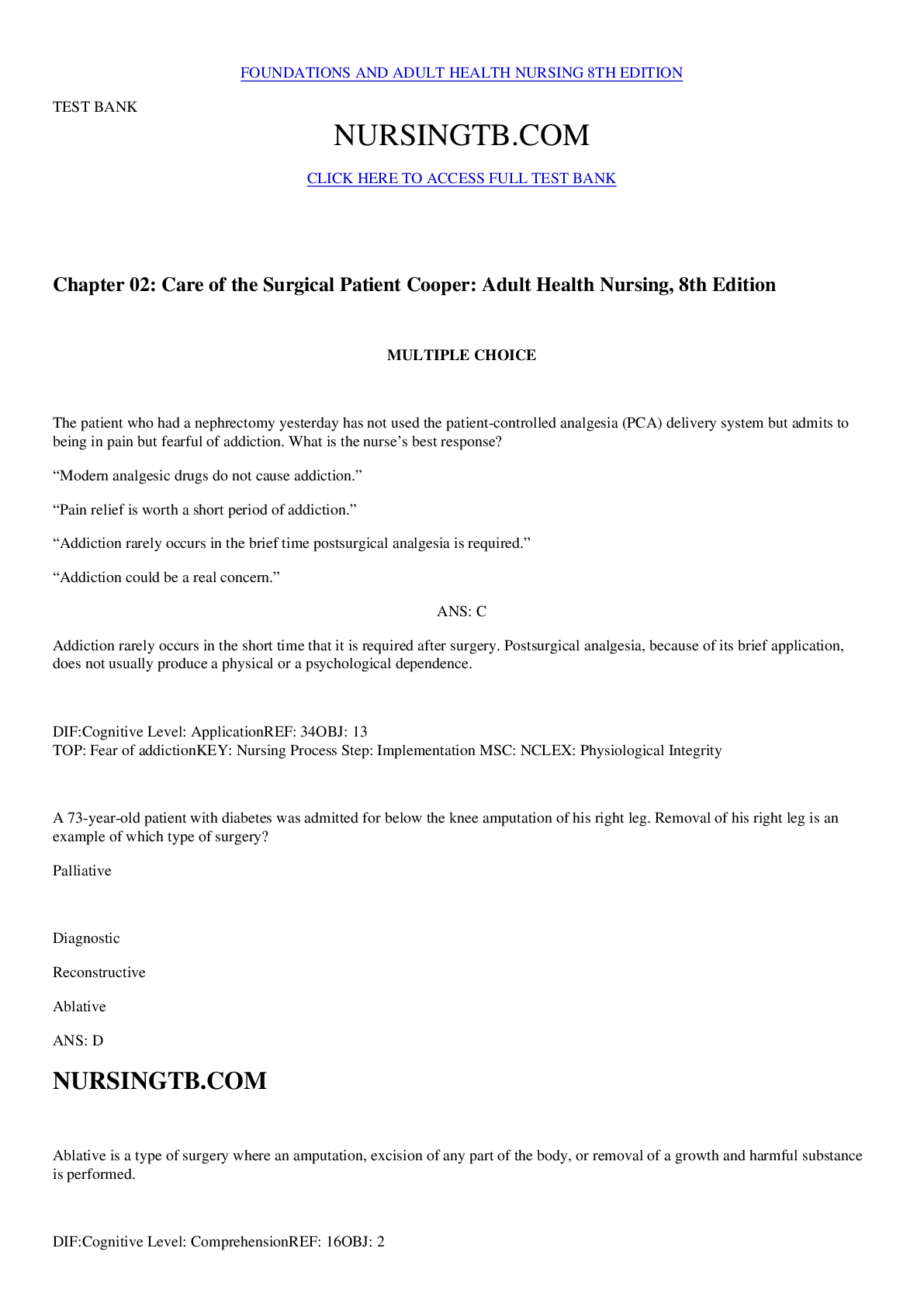


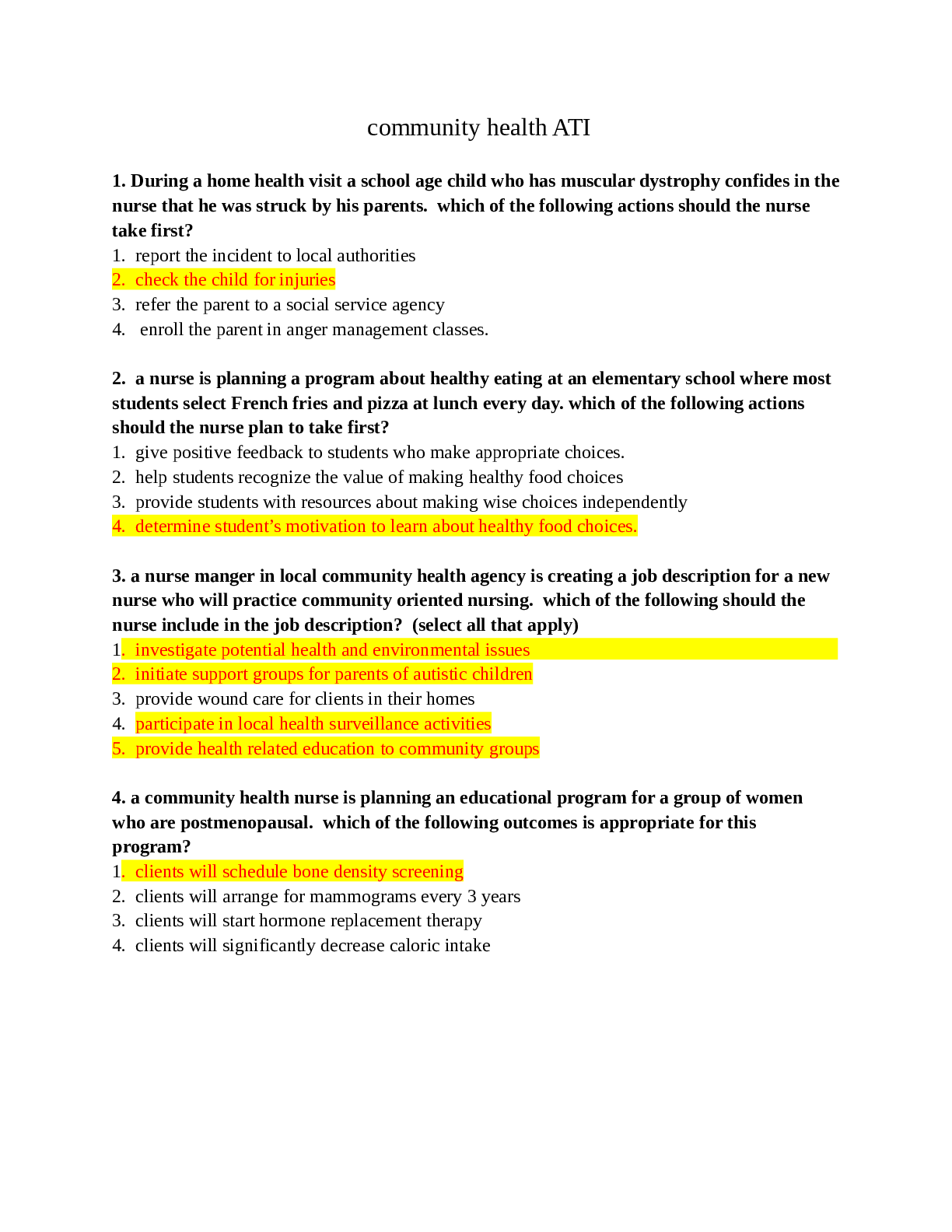
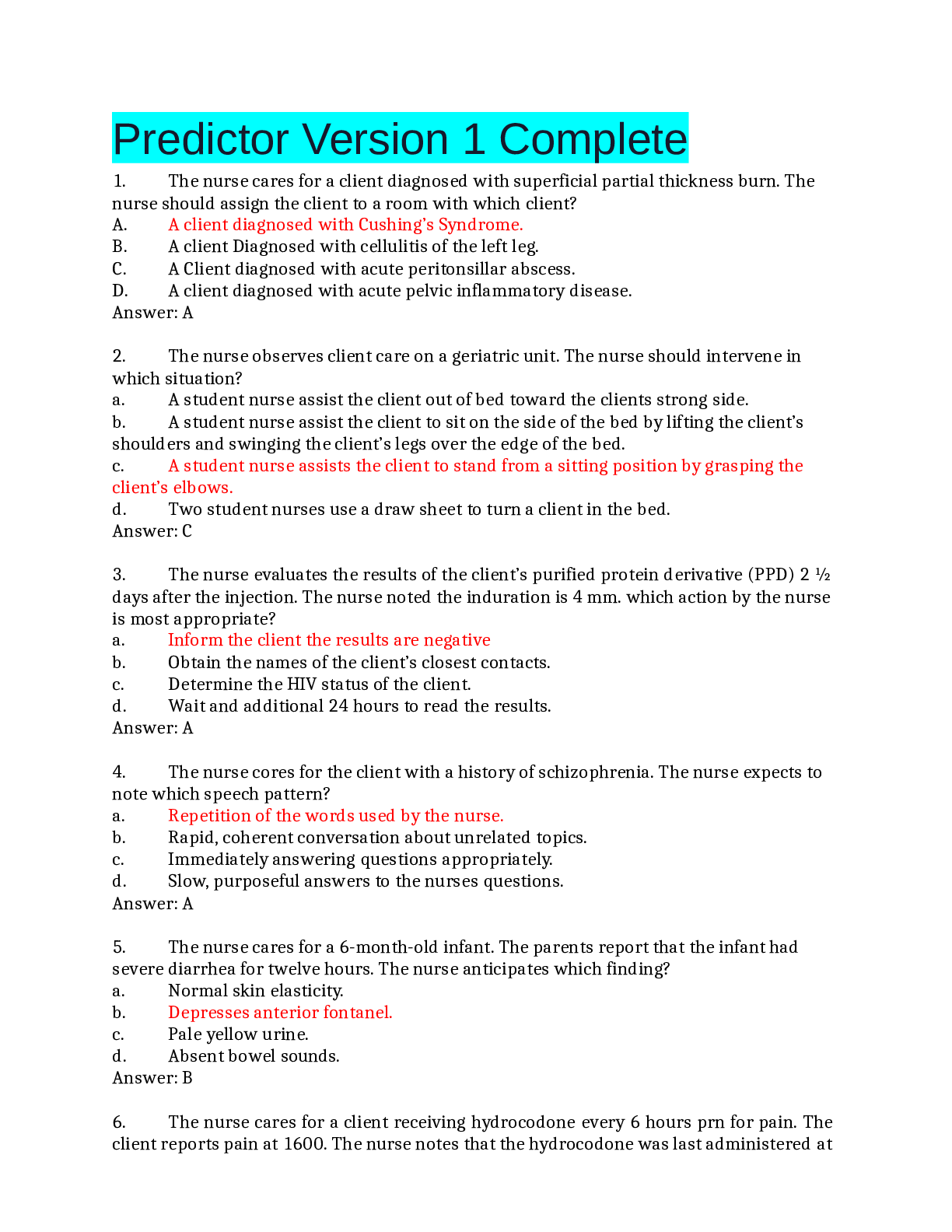

.png)

